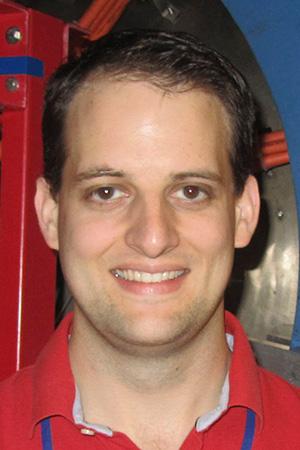
Clayton Myers
Princeton Plasma Physics Laboratory
Clayton Myers
Princeton Plasma Physics Laboratory
Friday, October 30, 2015
3:00pm
ABSTRACT
Astrophysical events such as solar eruptions are traditionally studied using a combination of remote observations and numerical modeling. An alternate approach that has emerged in recent years is that of laboratory plasma astrophysics. Here, laboratory experiments are specifically designed to study the physical processes that drive astrophysical events. In this seminar, I will describe one such experiment that studies the ideal magnetohydrodynamic (MHD) instabilities that are thought to drive solar eruptions. These instabilities act on long-lived, arched magnetic flux ropes that are "line-tied" to the solar surface. As such, we have designed and built an experiment to produce analogous flux ropes in the laboratory and to study their equilibrium and stability properties. Using data from in situ magnetic probes, we have mapped the stability parameter space as defined by two key flux rope instabilities: the kink and torus instabilities. Several of the stability regimes observed in the experiments are consistent with the present understanding of solar eruptions. In one regime, however, the torus instability unexpectedly fails to drive an eruption. Direct measurements of the magnetic forces acting on the flux rope reveal that a previously neglected magnetic field tension force is responsible for the "failed torus" behavior. These results suggest that the magnetic field tension force must be added to the models that are used to predict flux rope eruptions in the solar corona.
BIO
Originally from the small town of Carey, Ohio, Clayton Myers earned his BS in Engineering Physics from Cornell University in 2007 and his PhD from Princeton University's Program in Plasma Physics in 2015. For his doctoral thesis, Clayton used the Magnetic Reconnection Experiment (MRX) at Princeton Plasma Physics Laboratory (PPPL) to study the physics of solar eruptions. He subsequently joined the PPPL staff as a postdoctoral researcher on the National Spherical Torus Experiment Upgrade (NSTX-U) where he studies the physics of error fields, disruptions, and halo currents.